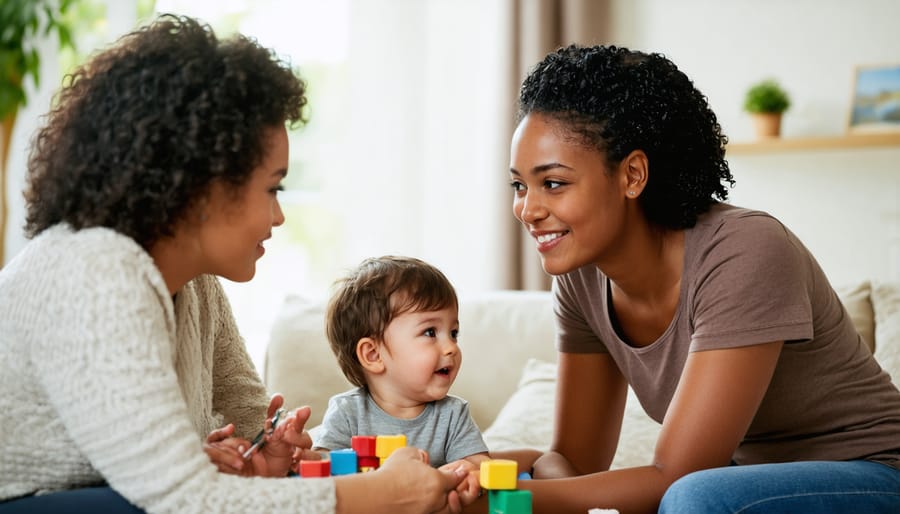As parents and caregivers, we face an increasingly complex landscape of safety challenges affecting our 6-12 year olds. From cyberbullying to playground injuries, from stranger danger to emotional well-being, the threats to our children’s safety have evolved dramatically in recent years. Yet understanding these risks is only half the battle – knowing how to protect our children while nurturing their independence is the real challenge.
Recent studies show that 70% of children in this age group encounter at least one significant safety concern during their elementary school years. However, experts emphasize that with proper awareness and preventive measures, many of these risks can be effectively managed without compromising children’s natural development and curiosity.
This critical period between ages 6 and 12 represents a unique window where children begin developing their own sense of judgment while still requiring careful guidance. They’re old enough to understand safety rules but young enough to need consistent reinforcement and protection. By addressing both physical and emotional safety concerns head-on, we can help our children navigate this crucial developmental stage with confidence and resilience.
Whether you’re a parent, teacher, or caregiver, understanding today’s safety challenges and implementing practical solutions is essential for protecting our children while empowering them to thrive in an increasingly complex world.
Key Safety Concerns Affecting School-Age Children
Physical Environment Safety
The physical environment where children spend their time plays a crucial role in their safety and well-being. When it comes to traffic safety, children ages 6-12 are particularly vulnerable as they begin to navigate streets more independently. Parents should ensure their children understand basic road safety rules and always use designated crosswalks and pedestrian signals.
Playground conditions require regular assessment to prevent accidents. Look for proper maintenance of equipment, adequate shock-absorbing surfaces underneath play structures, and appropriate spacing between equipment. Children this age are naturally adventurous, so ensuring playground equipment is age-appropriate and well-maintained is essential.
Neighborhood infrastructure affects children’s daily safety as well. Well-lit streets, maintained sidewalks, and clear signage help create safer environments for children to walk to school or play outside. Working with local community groups or your homeowner’s association can help address safety concerns like broken streetlights or damaged sidewalks.
As Dr. Sarah Martinez, a child safety expert, notes, “Creating safe physical environments isn’t just about preventing accidents – it’s about giving children the confidence to explore and develop independence while maintaining appropriate boundaries.”

Social Environment Concerns
Children aged 6-12 face various social challenges that can significantly impact their emotional well-being and safety. Bullying, whether physical, verbal, or cyber, remains a pressing concern in schools and neighborhoods. Studies show that nearly 20% of school-age children experience some form of bullying, which can lead to anxiety, depression, and decreased academic performance.
Stranger danger awareness is crucial during these formative years when children begin spending more time away from direct parental supervision. While it’s important not to create unnecessary fear, teaching children about safe interactions with unfamiliar adults helps build confident decision-making skills.
Peer pressure becomes increasingly significant as children approach adolescence. Combined with media exposure effects, children may feel pressured to engage in risky behaviors or adopt harmful attitudes. Parents should maintain open communication channels and create safe spaces for children to discuss their social concerns without fear of judgment.
To address these challenges, experts recommend role-playing scenarios, establishing clear safety rules, and fostering strong relationships with trusted adults at school and in the community. Regular check-ins about social experiences help identify potential issues early and ensure children feel supported in navigating their social environment.
Digital Safety Challenges
In today’s digital world, children face unique challenges as they navigate online spaces. Parents often worry about cyberbullying, inappropriate content exposure, and the addictive nature of social media platforms. Recent studies show that 45% of children aged 6-12 have experienced some form of online harassment, while excessive screen time impacts can lead to sleep problems, reduced physical activity, and decreased face-to-face social interactions. Games and apps designed to be engaging can sometimes cross the line into manipulative, making it difficult for young minds to set healthy boundaries. Privacy concerns are also significant, as children may unknowingly share personal information or connect with strangers online. The challenge for parents lies in balancing digital literacy development with protecting their children from these potential risks.

Mental Health Impact Indicators
Emotional Responses
Children often experience a range of emotional responses when faced with safety concerns, and it’s important for parents and caregivers to recognize these reactions as normal and valid. Many children express anxiety through physical complaints like stomach aches or headaches, while others might become more clingy or show regression in behaviors like bedwetting.
Fear and worry are common responses, particularly after hearing about scary events in their community or at school. Some children may become hypervigilant, constantly checking locks or refusing to be alone. Others might express their concerns through increased irritability or sudden emotional outbursts.
Kids in this age group might also feel embarrassed about their fears or try to hide them. They could withdraw from activities they previously enjoyed or show changes in their sleeping and eating patterns. Some may channel their anxiety into repetitive behaviors or develop new routines that help them feel more in control.
Remember that each child processes concerns differently, and their emotional responses can vary based on their personality, past experiences, and level of support. What might seem minor to adults could feel overwhelming to a child, so maintaining open, non-judgmental communication is crucial.
Behavioral Changes
Parents and teachers often notice distinct behavioral changes in children aged 6-12 when they’re feeling unsafe or anxious about their environment. These changes can manifest in various ways, serving as important signals that require attention and support.
Common behavioral shifts include reluctance to participate in previously enjoyed activities, especially outdoor play or social gatherings. Children might become increasingly clingy, asking for constant reassurance or refusing to separate from caregivers. Sleep patterns may change, with some children experiencing difficulty falling asleep, having nightmares, or requesting to sleep with their parents.
In school settings, teachers might observe decreased concentration, dropping grades, or withdrawal from group activities. Some children may express their anxiety through increased irritability, sudden outbursts, or unexpected aggression toward siblings or peers.
Daily routines might also be affected, with children developing new habits like repeatedly checking doors and windows, avoiding certain places, or creating elaborate “safety rules” for themselves. These changes often reflect their attempt to regain a sense of control over their environment.
Recognizing these behavioral shifts early allows parents and caregivers to provide appropriate support and intervention when needed.
Academic Performance
Safety concerns can significantly impact on academic performance as children struggle to focus on learning when they feel unsafe. When students are preoccupied with concerns about their safety, whether at school or in their community, their ability to engage with classroom activities and retain information often suffers.
Teachers frequently report that students experiencing safety-related anxiety may show decreased participation in class discussions, have difficulty completing homework, or struggle to maintain consistent attendance. These challenges can create a ripple effect, affecting not only their grades but also their overall educational development.
Research shows that children who feel secure in their environment are more likely to participate in extracurricular activities, engage with peers, and maintain higher levels of academic achievement. Conversely, those dealing with safety concerns may withdraw from school activities or experience difficulty concentrating during lessons.
Parents and educators can support these students by creating predictable routines, maintaining open communication, and working together to address specific safety concerns that may be affecting the child’s school experience.
Supporting Your Child’s Mental Well-being

Open Communication Strategies
Creating an open dialogue about safety with your child builds trust and helps them feel secure in coming to you with concerns. Start these conversations during calm, relaxed moments, like during family meals or casual walks, rather than waiting for a crisis to arise.
Use age-appropriate language and examples that your child can relate to. For 6-8 year olds, you might use simple analogies and stories, while older children can handle more direct discussions. Always validate their feelings and avoid dismissing their fears, even if they seem unrealistic to you.
Ask open-ended questions like “What makes you feel safe?” or “What worries you when you’re at school?” Listen actively without interrupting, and watch for non-verbal cues that might indicate discomfort or anxiety. Sometimes children communicate more through their behavior than their words.
Create a safe space where your child feels comfortable sharing without fear of judgment or punishment. Establish regular “check-in” times where you can discuss any concerns they might have. This could be during bedtime routines or weekend activities.
Remember to balance addressing safety concerns with maintaining a sense of security. While it’s important to be honest, avoid overwhelming children with too much information. Focus on empowering them with knowledge and practical solutions, rather than instilling fear.
Share age-appropriate strategies they can use when feeling unsafe, such as identifying trusted adults they can talk to or knowing how to contact you in emergencies. Regular reassurance and follow-up conversations help maintain open lines of communication and strengthen your parent-child bond.
Building Resilience
Helping children develop resilience is crucial in today’s world, where they face various safety challenges. Building mental resilience starts with creating a supportive environment where children feel safe expressing their concerns and emotions.
Start by establishing open communication channels with your child. Encourage them to share their worries without fear of judgment. When they express concerns about safety, validate their feelings while helping them develop practical problem-solving skills. For example, if they’re worried about walking to school, work together to create a safety plan that makes them feel more confident.
Teaching children positive coping strategies is essential. This can include deep breathing exercises, mindfulness activities, or simple physical exercises to release tension. Help them identify their emotional triggers and develop healthy ways to respond to stress.
Role-playing various scenarios can be particularly effective. Practice how to respond to different situations they might encounter, from dealing with bullies to handling emergencies. This hands-on approach builds confidence and gives them practical tools they can use when faced with challenges.
Remember that building resilience is a gradual process. Celebrate small victories and help children learn from setbacks. With consistent support and guidance, they can develop the emotional strength needed to navigate safety concerns while maintaining their sense of security and well-being.
Creating Safe Spaces
Creating safe spaces for children aged 6-12 is essential for their emotional and physical well-being. Start by designating specific areas in your home where children can feel secure and comfortable. A cozy reading nook, a quiet homework station, or a designated play area can serve as peaceful retreats when they need to decompress.
In the home, establish clear boundaries and routines that help children feel protected. Keep emergency contact numbers visible, ensure proper lighting in all rooms, and maintain working smoke detectors and security systems. Consider creating a “calm-down corner” with soft cushions, stress balls, and other sensory items that help children self-regulate when feeling overwhelmed.
In community spaces, work with other parents and local organizations to establish supervised areas where children can safely interact. This might include organized after-school programs, monitored playgrounds, or structured community activities. Encourage neighborhood watch programs and maintain open communication with school administrators about safety protocols.
Dr. Sarah Chen, a child safety expert, suggests, “The key is to balance protection with independence. Safe spaces shouldn’t feel restrictive but should empower children to explore and grow confidently.”
Teaching children about personal boundaries and safety awareness is crucial. Role-play scenarios that help them identify safe adults and appropriate responses to uncomfortable situations. Create a family code word that children can use if they feel unsafe or need help.
Remember to regularly check in with your children about their comfort levels in different environments. Their feedback can help you adjust and improve safety measures while ensuring they feel heard and valued in the process.
As we’ve explored the various safety concerns affecting children aged 6-12, it’s clear that creating a secure environment requires active participation from everyone in the community. The challenges our children face today – from physical safety in neighborhoods to online threats and emotional wellbeing – can seem overwhelming, but together we can make a significant difference.
Remember that children’s safety isn’t just about setting rules and boundaries; it’s about building resilience and confidence while maintaining open communication. When we teach our children about safety measures, we’re not just protecting them today – we’re empowering them with life-long skills to recognize and respond to potential risks.
Parents, teachers, and community members each play crucial roles in this collective effort. Consider joining your local neighborhood watch program, volunteering at school safety events, or participating in community initiatives focused on child safety. These actions not only help protect our children but also demonstrate to them the importance of community involvement and mutual support.
Don’t underestimate the power of regular family discussions about safety. Create opportunities for your children to share their concerns and experiences. When children feel heard and supported, they’re more likely to come to you with problems or uncomfortable situations they encounter.
Take advantage of available resources in your community – from school counselors to local law enforcement’s safety education programs. Many communities offer workshops and training sessions specifically designed for parents and children to learn together about various aspects of safety.
Looking ahead, staying informed about emerging safety challenges while maintaining perspective is crucial. Balance awareness with optimism – we want our children to be careful and conscious without becoming fearful or anxious about their world.
By working together and staying proactive, we can create safer environments where our children can thrive, learn, and grow with confidence. The effort we invest today in understanding and addressing safety concerns will help shape a more secure tomorrow for all our children.







